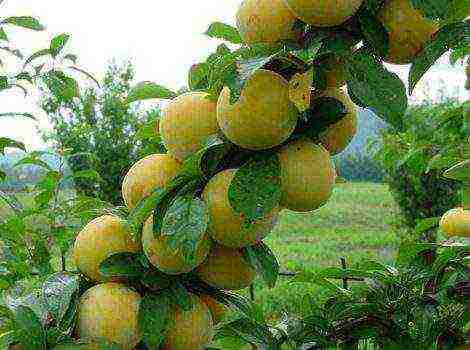Content
- 1 Apricot varieties for the Moscow region and the middle lane
- 2 The best early varieties of apricots
- 3 The best medium varieties of apricots
- 4 The best late varieties of apricots
- 5 Black apricot varieties.
- 6 Columnar varieties of apricot
- 7 The best varieties of apricots
- 8 Early varieties of apricot
- 9 Mid-season varieties of apricots
- 10 Late varieties of apricots
- 11 How to choose the best apricot for a summer residence (video)
- 12 Variety selection criteria
- 13 Apricots: characteristics of varieties (video)
- 14 The best early varieties
- 15 The best late varieties
- 16 The best varieties of medium ripening
- 17 Low-growing varieties
- 18 Growing features
- 19 How to plant an apricot (video)
- 20 Reviews and comments
Apricot varieties for the Moscow region and the middle lane
Apricot is traditionally a southern crop, but thanks to the efforts of domestic breeders, it is successfully grown in the difficult climatic conditions of the Moscow region and the middle zone. It is worth purchasing apricot varieties zoned for these places, which have high winter hardiness and self-fertility, as well as the ability to survive possible thaws and spring frosts without much loss. We offer an overview of the most popular types of apricots.
"Lel"
"Lel" is a variety with a very early ripening of fruits, is self-fertile. The yield is small, but if other types of apricots are grown in the neighborhood, the harvest will increase.
- Average yields are about 20 kg per tree.
- Orange fruits weighing 20 gr. excellent taste with easily separable pits. Ripening time - end of July.
- Spreading trees up to 3 m in height.
- It gives the first harvests in the third or fourth year after planting the seedling.
- It perfectly tolerates frosts down to -30. Suitable for growing in the Central region.
- The susceptibility to diseases and pests is average.
Varietal advantages: excellent taste characteristics of fruits, early maturity, good transportability, decent winter hardiness of the bark and buds.
Minuses: small fruit size, large stone, can be damaged by clasterosporium and aphids without preventive measures.
"Tsarsky"
"Tsarskiy" is an early maturing, self-fertile species, brings stable, but small yields.
- Average yields are 20-30 kg per tree.
- Fruits are yellow with a ruddy barrel weighing up to 20 g with sweet and sour juicy pulp, ripen in early August.
- The tree is moderately vigorous 3-4 m.
- In the third or fourth year after planting, the seedlings begin to bear fruit.
- Strong winter hardiness (up to -40). It is successfully grown in the Moscow region and the middle lane.
- Good resistance to major diseases, it needs protection from pests.
Varietal advantages: early maturing, self-fertile, highly winter-resistant.
Minuses: small in size fruits, low yield, the stone is poorly separated from the pulp.
"Aquarius"
"Aquarius" is a high-yielding, self-fertile, mid-season apricot variety.
- Productivity is regular high 50-60 kg per tree.
- Fruits, yellow with a blush, weighing 25-30 g with tender juicy pulp, ripen in mid-August.
- The tree grows up to 5-6 m in height.
- Begins to bear fruit in the third or fourth year.
- Excellent frost resistance. The variety is zoned for planting in the Central region.
- Resistance to diseases and pests is satisfactory.
Varietal advantages: high-yielding, self-fertile, frost-resistant, easy separation of the bone from the pulp.
Minuses: large tree growth complicates maintenance and harvesting.
"Russian"
"Rossiyanin" is remarkable for its early ripening of fruits and high yield.
- Yields are abundant up to 80 kg per tree.
- Yellow-orange fruits weighing 50-60 g with tasty juicy pulp. Ripening time - the end of July.
- The tree is 3-4 m high.
- The first crop can be obtained in the fifth year of growth.
- Winter hardy, withstands frosts down to -30. Suitable for growing in the suburbs and regions of the middle lane.
- Susceptibility to diseases is average.
Varietal advantages: early ripening, abundant harvests, large fruits, high winter hardiness.
Minuses: average disease resistance.
"Hardy"
"Hardy" - has a very good winter hardiness of wood and buds. The species is self-fertile, fruitful.
- The yield is 60 kg per tree.
- Fruits, orange with a reddish barrel, weighing 40 g with aromatic sweet pulp. The harvest ripens in the first half of August.
- Vigorous trees 5 m tall.
- It brings the first harvests in the fifth or sixth year after planting the seedling.
- It tolerates severe frosts. It is successfully grown in the Moscow region and central Russia.
- Disease resistance is satisfactory.
Varietal advantages: excellent winter hardiness, stable high yields, self-fertility.
Minuses: the tallness of the tree makes it difficult to care for and harvest.
"Honey"
Apricot "Honey" has high frost resistance, good productivity, but self-fruitless and needs neighbors-pollinators.
- It brings yields of 15-20 kg per tree.
- Fruits are golden-yellow with reddish specks weighing 15 g with delicate sweet pulp, ripen in the first half of August.
- Spreading tree with a height of about 4 m.
- First fruiting in the third or fourth year.
- Calmly withstands frosts down to -35 and above. Suitable for planting in the suburbs and central Russia.
- Disease and pest resistance is low. Needs protective measures.
Varietal advantages: high winter hardiness, early maturity, excellent fruit taste, easy separation of the seed.
Minuses: small fruits, self-fertility, low resistance to diseases and pests.
The best early varieties of apricots
"Northern Triumph"
Early ripening variety, self-fertile with excellent yield and winter hardiness.
- The yield reaches 60 kg / s tree.
- Fruits are yellow-orange, weighing 50 g with delicate sweet pulp. Ripens in early August.
- Spreading tree with a height of 4 m.
- Begins fruiting in the fifth year of growth.
- Winter hardiness is excellent. It can be grown in the Central Black Earth Zone, Siberia, and the Urals.
- High resistance to major diseases.
Varietal advantages: fruitful, self-fertile, early maturing, frost-resistant.
Minuses: fruiting is unstable, average winter hardiness of the buds.
"Khabarovsk"
"Khabarovskiy" is a variety of apricot with early ripening, stable yield and self-fertility.
- The annual yields are high 35 kg per tree.
- Light yellow with a slight blush, fruits weighing 30 g with dense sweet and sour pulp, ripen at the end of July.
- Spreading tall tree 4-5 m.
- In the fourth or fifth year, the tree gives its first harvest.
- Winter hardiness at an average level. The variety is recommended for the Primorsky and Khabarovsk Territories.
- Relatively resistant to major diseases.
Varietal advantages: early maturing, self-fertile, large tasty fruits, high yield.
Minuses: average winter hardiness, low transportability, can be damaged by the moth.
"Pineapple"
The Pineapple variety is characterized by self-fertility and high productivity.
- Yields are 50 kg, and sometimes up to 120 kg in good years.
- Fruits are yellow, large, weighing 35-45 g with aromatic sweet pulp. Ripening time is the second half of July.
- A tree of medium height up to 4 m with a dense crown.
- Fruiting begins in the third or fourth year after planting the seedling.
- Winter hardiness is small (up to -25). It is grown in areas with a warm temperate climate.
- Good disease resistance.
Varietal advantages: self-pollinated, high-yielding, drought-resistant, tasty fruit for universal use.
Minuses: average frost resistance, when ripe, apricots quickly crumble from the branches, if you delay harvesting.
"Champion of the North"
"Champion of the North" is an early ripening variety that gives good yields and is self-fertile.
- The yield is 18-25 kg per tree.
- Fruits are orange with a blush, weighing 30-60 g, with sweet and sour pulp and easily separated stone. The kernel is sweet at the stone. Ripening time - end of July.
- Strong growth tree with sparse crown.
- In the fourth year after planting, it brings the first crop.
- High winter hardiness makes it possible to successfully grow this species in the Central Black Earth Region.
- Disease and pest resistance is good, but preventive measures are needed to protect them.
Varietal advantages: high frost resistance, self-fertility, early maturity, good transportability.
Minuses: insufficiently juicy pulp, susceptibility to clasterosporium disease in rainy summers.
The best medium varieties of apricots
"Red-cheeked"
"Red-cheeked" - one of the most common varieties of apricot, unpretentious, fruitful and self-fertile.
- Brings bountiful harvests up to 90 kg per tree.
- Fruits are orange with a bright blush, weighing 40-50 g with aromatic sweet and sour pulp. The bone is easily separated.
- A tree up to 4 m tall with a spreading crown.
- The first crop is harvested in the third or fourth year after planting the seedling.
- Winter hardiness is satisfactory. Recommended for planting in the North Caucasus and Lower Volga regions.
- Disease resistance is relative.
Varietal advantages: self-pollinated, fast-growing, high-yielding, large fruits of excellent taste.
Minuses: when overripe, apricots quickly crumble, needs protective measures against diseases.
"Son of the Red-cheeked"
"Son of the Red-cheeked" - self-pollinated, mid-season, giving good yields.
- Harvest weight 30 kg per tree.
- Fruits are orange with a dense blush, weighing 35-55 g, sweet and sour, juicy, ripen at the end of July.
- The tree is tall with a dense crown.
- The first harvest is obtained in the fourth year.
- Frost resistance is good enough. It is grown successfully in the Lower Volga region.
- Disease resistance is good, but prevention is needed.
Varietal advantages: self-fertile, late flowering avoids freezing by recurrent frosts, fruits of excellent taste with easily detachable pits.
Minuses: poorly tolerates thaws, after which the fruit buds freeze, the thickened crown needs annual thinning.
"Kichiginsky"
"Kichiginsky" is a frost-resistant, mid-season, self-fertile species. For cross-pollination on the site, you need to plant other varieties of apricots.
- The yield is 15 kg per tree.
- Small yellow fruits weighing 15 g with aromatic sweet and sour pulp, easily separated by a stone. The ripening time is the first half of August.
- A tree of moderate growth with a thin crown.
- The beginning of fruiting in the fifth year after planting.
- It tolerates severe frosts perfectly. "Kichiginsky" is recommended for cultivation in the Ural region.
- Immune to major diseases of stone fruit crops.
Varietal advantages: high winter hardiness, stable productivity, good transportability.
Minuses: small fruits, self-fertility.
"Dessert"
"Dessert" is an excellent variety for the middle lane, with early ripening and abundant productivity, self-pollinated.
- Fees from one plant reach 50 kg.
- Fruits are light yellow, weighing 30 g. The pulp is sweet with a pleasant sourness. Fruit ripens at the end of July.
- The apricot tree is about 5 m tall.
- The first fruits are obtained in the fourth year after planting.
- Winter hardiness is high. Recommended for cultivation in the Central Black Earth Region.
- Disease immunity is decent.
Varietal advantages: excellent frost resistance, self-fertility, abundant productivity.
Minuses: a powerful, spreading tree makes it difficult to care for and harvest.
"Countess"
"Countess" is a variety with good winter hardiness and productivity, but needs cross-pollination.
- 20-30 kg of fruits are harvested from the tree.
- Fruits are yellow with a reddish barrel weighing 25 g, juicy and sweet. Harvesting ripe fruits in mid-August.
- Powerful tree 5-6 m high.
- Beginning of fruiting in the third or fourth year after planting.
- Withstands severe frosts up to -30 without noticeable freezing. "Countess" grows well in the Moscow region and the middle lane.
- In a rainy, cold summer, it suffers from fungal diseases, especially damaged by clasterosporium.
Varietal advantages: excellent winter hardiness and productivity, excellent taste and keeping quality of fruits, early maturity.
Minuses: self-fertile, very tall tree makes it difficult to care for and pick fruit.
The best late varieties of apricots
"Monastyrsky"
"Monastyrskiy" is a late-ripening, self-pollinated, frost-resistant variety.
- The yield is 20-25 kg per plant.
- Orange apricots with a reddish barrel weighing 30-40 g. Taste sweet and sour, juicy pulp. Ripening time is the second half of August.
- The tree is tall, spreading, 5 m in height.
- Begins to bear fruit in the fifth year after planting.
- It perfectly tolerates the frosty winters of the Moscow region. Recommended for growing in areas of the middle lane.
- Immunity to diseases and pests is significant.
Varietal advantages: excellent winter hardiness, self-fertility, tasty fruits with good transportability.
Minuses: tall trees, due to late ripening in cold summer, the fruits do not have time to ripen.
"Favorite"
"Favorite" is a late-ripening type of apricot, self-pollinated, with excellent winter hardiness, giving stable good yields.
- The collection of fruits is about 20 kg.
- Orange apricots with a thick blush weighing 30 g sweet and sour taste. Fruit picking in the second half of August.
- A tree 3-4 m high with a wide crown.
- It begins to bear fruit in the third or fourth year.
- High resistance to severe frost. It is successfully grown in the Central Region.
- Diseases are slightly damaged.
Varietal advantages: self-fertile, winter-hardy, early-growing, tasty fruits of universal use, the bone is well separated from the pulp.
Minuses: late ripening, in cold summer the fruits do not have time to ripen.
Black apricot varieties.
Black apricot is a hybrid of cherry plum and apricot. This variety has several advantages: late flowering helps to avoid damage to flower buds by spring frosts, trees of moderate growth, high resistance to fungal diseases of stone fruit. Bred varieties of black apricot with high winter hardiness and self-fertility.
"Black Velvet"
"Black Velvet" is a variety of black apricot with an annual yield and high winter hardiness. The variety is partially self-fertile. Cherry plum or other varieties of apricot are suitable for cross-pollination.
- The yield is average, but regular.
- Fruits are dark purple weighing 25-30 g with aromatic sweet and sour pulp. The bone is well separated. Ripening time - the end of July.
- The tree is medium-sized with a neat crown.
- Begins to bear fruit in the fourth year.
- Frost resistance is satisfactory. "Black Velvet" is zoned for the North Caucasian region.
- Practically immune to fungal diseases.
Varietal advantages: frost-resistant, annual yield, good transportability and keeping quality of apricots, excellent disease resistance.
Minuses: small fruit size, partially self-pollinated.
"Black Prince"
"Black Prince" is a type of black apricot with an annual yield, large fruits. Is self-fertile.
- The average yield is 10-15 kg, in favorable years up to 30 kg per tree.
- Fruits are dark burgundy weighing 60-80 g with tasty juicy pulp.Ripening time - the first half of August.
- The tree is medium-sized 3-4 m with a neat crown.
- Winter hardiness is good, fruit buds are not damaged by spring frosts. Recommended for planting in the North Caucasus region.
- Has a high resistance to major fungal diseases.
Varietal advantages: large-fruited, stable yield, high immunity, self-fertility.
Minuses: poor transportability, when ripe, apricots massively crumble, it is better to collect them unripe.
"Kuban black"
"Kuban Black" is a frost-resistant, medium-yielding, self-fertile variety. Cherry plum and other varieties of apricot are suitable for cross-pollination.
- The yield is average (76 kg / ha) and irregular.
- Burgundy-purple fruits weighing 25-35 g, sweet and sour with a pleasant aroma, ripen at the end of July.
- The tree is tall, the crown is thickened.
- The first harvests can be obtained in the third year after planting the seedling.
- Frost resistance is good enough. "Kuban black" is zoned for the North Caucasian region.
- Excellent disease resistance.
Varietal advantages: winter-hardy, tasty fruits of universal application, good transportability, high immunity.
Minuses: vigorous trees are difficult to care for, self-fertility.
Columnar varieties of apricot
The columnar apricot has a straight, strong trunk with short lateral shoots forming a compact column-shaped crown. Trees of columnar apricot varieties of small growth 2-2.5 m, take up little space and are very decorative. An important point in the cultivation of such species is the annual crown-forming pruning of a young tree as it grows. Columnar apricots are becoming more and more popular with amateur gardeners.
"Prince March"
"Prince March" is a columnar apricot with a good yield, self-fertile and quite winter-hardy.
• Productivity is high enough.
• Apricots are bright orange with a ruddy barrel weighing 30-60 g. The pulp is juicy, sweet, with an easily separable stone. Ripening time - early August.
• Low tree 2 m with a columnar crown.
• The first harvest gives in the second or third year after planting the seedling.
• High winter hardiness, tolerates frosts down to -30. It is grown in regions with a warm climate. It is possible to grow in the middle lane with proper care.
• Excellent resistance to diseases and pests.
Varietal advantages: undersized compact tree is easy to care for and when harvesting, self-fertility, early maturity, delicious apricots for universal use.
Minuses: due to early flowering, flower buds can be damaged by spring frosts, requires annual formative pruning.
"Star"
"Zvezdny" is a kind of columnar apricot with excellent winter hardiness and large fruits. The variety is self-pollinated.
- The yield is high.
- Fruits are bright yellow, weighing 40 g, sometimes up to 100 g. The pulp is very tasty and aromatic. Ripening period - the first half of August.
- The tree is not tall with a neat columnar crown.
- It starts bearing fruit in the third year after planting.
- Frost resistance up to -30. It is possible to grow in the middle lane with the necessary care.
- Resistant to major diseases of stone fruit crops.
Varietal advantages: undersized tree, large fruits of universal application, self-fertility and early maturity.
Minuses: obligatory annual pruning, early flowering.
On a note: A common problem when growing apricots is bark heating. Experienced gardeners are advised to purchase seedlings grafted on the stock of frost-resistant, unsupported varieties of cherry plum, plum and thorny plum.
It is best to plant several different varieties of apricot in order to provide yourself with bountiful annual harvests.
Save article to:
Dear visitors of the "Dacha Plot", tireless gardeners, gardeners and flower growers.We offer you to pass the aptitude test and find out whether you can trust the shovel and let you into the garden with it.
Test - "What kind of summer resident I am"
Share this article with your friends:
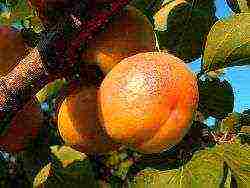 It is difficult to call the territory where apricots are not grown as a full-fledged summer residence. Therefore, we are urgently considering the best varieties of apricots and planting a classic fruit tree to complement the garden and juicy gifts for children and grandchildren.
It is difficult to call the territory where apricots are not grown as a full-fledged summer residence. Therefore, we are urgently considering the best varieties of apricots and planting a classic fruit tree to complement the garden and juicy gifts for children and grandchildren.
The best varieties of apricots
It is difficult to judge these plants in this way, choosing which is better and which is worse, because each apricot has its own unique aroma and taste, fruit density and juiciness, sugar or sourness content. But these are not all the characteristics, especially if we recall the early and late varieties, large fruits, and even the number of lived inside each ripe apricot. In general, it will not work so easy to figure it out, and therefore we suggest that you take the time and study the topic more deeply.
So, we make an easy overview of the varieties so that, based on the results, you can choose varieties for the Moscow region, Ukraine, the Middle Strip, as well as other climatic zones and regions.
Early varieties of apricot
There are quite a few early varieties, and we will give most of them now, but be careful, because we will talk about some of them in more detail. It seems to us that they are the ones that deserve the most attention.
Also read: Sevok before winter: timing and planting technology
The cultivation of this variety does not differ from the agricultural technology of others, the only thing that is required from the owners of the dacha with these plantings is to collect the fruits in time so that they do not have time to fall off.
Melitopol early
This variety is great for almost any summer cottage, because it is resistant to many diseases, as well as high winter hardiness. A tree with a pyramidal crown, average yield, serious fruits in size, sometimes up to 50-60 g each. Apricots are oval, slightly flattened, orange-yellow with a thin skin, under which there is a fragrant and dense pulp without fibers. The sweet taste and high quality of the fruit will not leave anyone indifferent as long as there are ripe apricots on the tree.
Melitopol early does not require special care, the main thing is timely pruning in order to prevent thickening of the crown.
Lescore
This variety is practically unknown, since it was not widely advertised by the breeder, whose name was also lost in the archives. Lescore came to us from the Czech Republic, where it has been grown for a long time, since summer residents really like its early maturity.
Lescore is distinguished by a strong, tall tree, the crown of which is reverse-pyramidal, which, by the way, is very interesting. The fruits of the tree are medium-sized, and sometimes large, up to 45 g, have a pleasant taste and a strong, natural aroma. The only drawback of summer residents is the weakness before certain diseases, especially before moniliosis.
It is important to prevent diseases of the tree and treat it with special preparations in time. In the summer, it is imperative to provide watering, about once or twice a month.
Mid-season apricot varieties
Most often, dachas grow medium-ripening apricots, this is even some tradition. Among them are the following: Krasnoshchekiy, Zaporozhets, Goldrich, Altair, Aviator, Petrel, Olympus, Phelps, Polesskiy large-fruited, Aquarius, Yaltinets, Monastyrskiy, Amurskiy, Molodezhny, Shalamark and others.
Red-cheeked
A medium tree and a spreading crown can show excellent results - fruits weighing up to 35 g. Apricots are bright orange, with reddish sides, slightly flattened and similar to an oval. The taste is sweet with some sourness. Red-cheeked is a self-fertile variety, and therefore is very popular among summer residents. In addition, the plant shows high productivity, unpretentiousness, average neutrality to diseases, drought and frost.
An unpretentious tree can live in almost any conditions, but only if diseases are not allowed, for which prevention is necessary.
Polessky large-fruited
The trees of this variety are medium-sized, with a rounded crown and very dense greenery. The fruits are sweet and sour, tender, very aromatic, weighing up to 55 g, which is considered an excellent result. The apricot is oval or rounded, bright orange with red sides or blotches, but most often just ruddy.
The fruits are great for eating raw, but processing into blanks is also possible. Compote turns out to be especially tasty.
The variety is considered fruitful and fast-growing, which means it is perfect for a summer cottage where the garden is updated or supplemented.
Large-fruited varieties require timely and accurate harvesting, and therefore be prepared to use a stepladder, tables and chairs. By and large, the tree will not require any serious care, except for standard agricultural techniques.
Yaltynets
A unique tree with original fruits, strong growth and a spreading crown. The fruits are really large, up to 60-65 g, ovoid, flattened on the sides, most often orange, but there are also bright yellow with a specific shade. Speaking about taste, you can notice a serious difference from many varieties, because the taste is sweet and pronounced.
Abricoski have excellent canning and table qualities, and therefore can be safely used fresh or ready-made.
The plant is distinguished by a constantly high yield, resistance to drought and frost, as well as good resistance to many diseases of the orchard.
Pineapple
Medium-sized tree with a rounded crown, which is not distinguished by abundant greenery. The variety is considered to be quite fruitful, sometimes up to 150 kg of fruits from one tree. Fruits are large or medium, weighing about 40-50 g, orange in color and compressed on both sides. Medium density pulp, excellent taste and aroma.
Pineapple apricot is self-fertile, highly frost-resistant, but susceptible to some garden diseases.
This variety is considered unpretentious, but requires special attention in mass plantings. It is undesirable to shade it with larger trees; timely pruning is required.
Late varieties of apricots
Late varieties, which mature closer to the last warm days of summer, include: Kievskiy red, Iskra, Favorite, Sirena, Kostyuzhenskiy, Osobenniy Denisyuk and others.
Favorite
The tree is medium-sized, the crown is medium-spread. Fruits are medium in size, weighing about 30 g, beautiful and shiny, orange and slightly pubescent, round in shape. The pulp is dense, orange in color, very tasty and juicy, reaching the highest points in tasting competitions.
Apricots of this variety, like, in principle, any other, are excellent for fresh consumption, but also suitable for conservation. The variety shows high winter hardiness, although it also has a serious drawback - in some regions, the crop does not have time to ripen before the end of the warm season.
It is imperative to prevent diseases and pests that can spoil the tree and deprive you of fragrant and tasty fruits.
Spark
A medium-sized tree with a rounded crown, which begins to bear fruit early enough. The fruits reach a weight of 45 g, round, sometimes asymmetric, orange in color with red blotches or a characteristic pink blush. Pulp with sweet and sour taste, medium density, juicy enough.
Speaking about the advantages of the variety, it can be said that Iskra has a constant yield, increased winter hardiness and resistance to some diseases of the orchard.
Do not forget about pruning and timely spraying of trees, especially when you carry out prophylaxis of the entire orchard.
From the above list, you can easily choose winter-hardy varieties of apricot, sweet or sour-sweet, as well as large-fruited.
In addition to the varieties that we have already indicated in our material, the varieties Lel, Delight, Triumph northern, Black and Honey apricots, as well as the Kichiginsky variety, are popular with summer residents.
How to choose the best apricot for a summer residence (video)
Choose the best apricot varietiesit is much easier not only when you read some of the characteristics, but also when you thoroughly understand the cultivation technique, because you need to choose a plant according to your own requirements, but do not forget about the needs of the tree itself.
Attention, only TODAY!
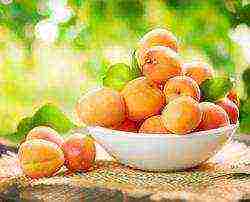 Apricot, or Prúnus armeniáca, belongs to the fruit trees of the Plum species and of the Rosaceae family. The fruits of this tree are used not only fresh, but also serve as raw materials for the preparation of several varieties of dried fruits, including dried apricots and apricots.
Apricot, or Prúnus armeniáca, belongs to the fruit trees of the Plum species and of the Rosaceae family. The fruits of this tree are used not only fresh, but also serve as raw materials for the preparation of several varieties of dried fruits, including dried apricots and apricots.
Apricot has long been widely used as a horticultural crop in the countries of Central Asia. Recently, it has been actively cultivated in the southern regions of our country, on the territory of Moldova, Ukraine and Belarus.
Variety selection criteria
Soil types on the territory of Ukraine are very diverse and, as you know, fertile enough for growing fruit and berry crops, including apricot. Ukraine is characterized by the presence of a relatively mild, weak and moderate continental climate, as well as gradually increasing continentality towards the eastern regions of the country.
The northeastern part of Ukraine, including Sumy, Chernigov, Lugansk, part of Kharkov, Kiev, Zhytomyr and Rivne regions, is represented by a continental climate, which is quite favorable for the cultivation of stone fruit plants. The territories with favorable soil and climatic conditions include the central and southern regions of Ukraine, the Carpathian and Transcarpathian regions.
Apricot is a fruit crop that is not too demanding on soil conditions, which grows well enough and forms a good yield even when grown on slopes, along ravines and ravines. This garden culture is quite drought-resistant and resistant to high temperatures. Due to the very favorable weather conditions for cultivation and the rich soil composition in a significant part of the regions, the best apricot varieties for Ukraine can be represented by both early maturing and mid-season and late varieties. However, many gardeners still prefer the cultivation of low-growing varieties of apricot that are unpretentious and well adapted to local conditions.
Also read: "Zvezdochka" apple trees: the nuances of growing in central Russia
Apricots: characteristics of varieties (video)
The best early varieties
Early varieties of apricot are very popular in home gardening conditions, not only in Ukraine, but also in our country. However, the newer and more promising varieties of this fruit crop possess the maximum yield and good adaptation to weather conditions.
| Variety name | Botanical description | Fruit characteristics | Advantages and disadvantages |
| "Melitopol early" | Medium-sized trees with a wide crown | Broadly oval, covered with a thin, delicate, yellow-orange skin with a slight red blush | Dessert and self-fertile variety, resistant to bacterial cancer |
| "Lescore" | Trees with a high and reverse pyramidal crown | Medium-sized fragrant fruits weighing up to 44-45 g, with a pleasant taste | Early ripening and very productive variety of Czech selection |
| "Alyosha" | Quite vigorous trees with a spreading crown | The fruits are visually attractive and have a very refined, sweet and sour taste. | Winter hardiness and frost resistance are high. Fruiting on all types of shoots |
| "Household" | Medium vigor, with a fairly spreading crown | Leveled, weighing no more than 43–45 g, light orange with carmine blush. The presentation is very good | Self-fertile, but very productive variety |
The best late varieties
As a rule, it is late varieties of apricot are best suited for longest storage and are used not only for fresh consumption, but also for canning for the winter.
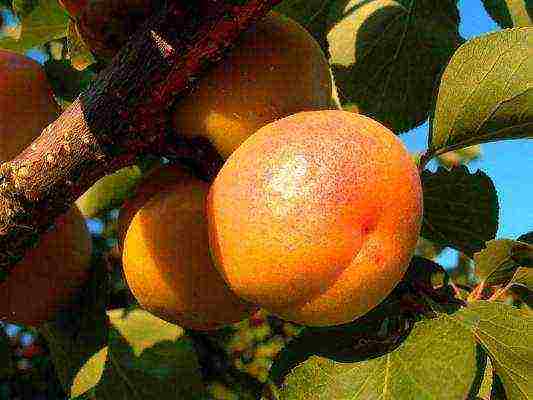
| Variety name | Botanical description | Fruit characteristics | Advantages and disadvantages |
| "Nikitsky red-cheeked" | Vigorous and very well leafy plants | Large size, with a bright blush, pink-orange pulp, excellent taste | Transportable and high-value variety |
| "Red partisan" | Medium vigorous trees with a strong skeleton | Evenly shaped and large in size, yellowish-orange fruits with a very balanced taste of juicy pulp | Indicators of transportability and keeping quality of the harvested crop are very good |
| "Siren" | Plants are medium or vigorous, beginning to bear fruit in the fourth year | Oval, elongated, large orange fruits with a pronounced red blush | A very popular and demanded partially self-fertile variety of Romanian breeders |
The best varieties of medium ripening
Mid-season varieties are characterized by an excellent combination of good yields with a very balanced taste.
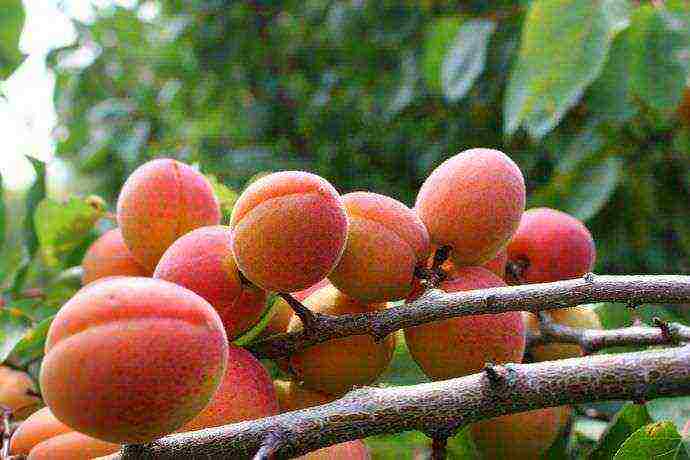
| Variety name | Botanical description | Fruit characteristics | Advantages and disadvantages |
| "Veteran of Sevastopol" | Weak fruit plants with a relatively sparse but spreading crown type | Large size, round oval, attractive shape. The pulp is tasty and tender, orange-yellowish color | Partially self-fertile and very productive variety with increased winter hardiness |
| "Red-cheeked Nikolaevsky" | Strong and vigorous trees with a spreading, but not thickened crown | The fruits are large. Fibrous type of pulp, covered with a yellow-orange skin with a very bright blush. Excellent taste | The harvested crop is distinguished by high keeping rates, transportable. The variety is resistant to major diseases |
| "Burshtynovy" | Trees with high vigor, vigorous | Egg-shaped, very large. The pulp is orange, with a high level of juiciness | Very frost-resistant variety, with a low risk of moniliosis and clotterosporiosis |
| "Polessky large-fruited" | Medium vigorous plant with an attractive crown | Very attractive and large, weighing up to 95-105 g. The pulp is not fibrous, delicate and aromatic | The crop is used for fresh consumption, but also suitable for canning |
Low-growing varieties
Low-growing varieties of apricot are quite in demand in home gardening, which are very convenient in terms of placement and maintenance: "Honey", "Cup", "Iceberg", "Cupid", "Early", and hybrid forms - "DVB-25", "Ok-Zh-2".
As a rule, all low-growing apricot varieties belong to the category of slow-growing, compact fruit trees and have a fairly dense, rounded-elongated crown. These features make it possible to place fruit plantations on plots of insignificant size and greatly facilitate the implementation of measures for pruning, crown processing and harvesting.
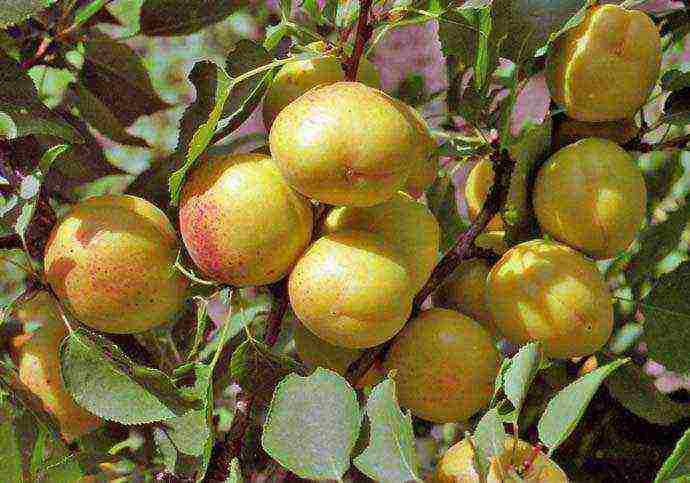
Growing features
Apricot trees are characterized by high rates of drought tolerance, relatively fast growth and the ability to enter fruiting early. Most often, the productive age falls on the third or fourth year after planting a seedling in a permanent place. The yield of apricot plantations is very high and annual.
Caring for properly planted plants is not difficult at all. In early spring, even before active sap flow begins in fruit trees, the formation of an apricot and its sanitary pruning are carried out. Further measures for the care of garden plantings involve timely irrigation measures and the introduction of basic fertilizers.Top dressing is done at least twice a season, and its composition and application rate depend on the age of the fruit trees and the quality characteristics of the soil.
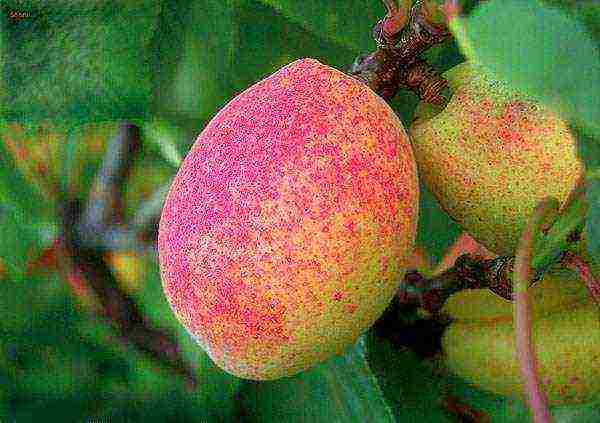
Most of the apricot varieties belong to the category of frost-resistant, therefore they can easily withstand frosts in winter to –25–30 ° С. Certain disadvantages of already existing varieties and forms of apricot include a fairly short dormant period in winter. However, climatic conditions in most of Ukraine reduce the risk of flower death as a result of late spring frosts to almost zero.
Experienced gardeners of Ukraine and adjacent regions also recommend paying attention to varieties such as "Pineapple Tsyurupinsky", "Hungarian best", "Superior", "Kiev red" and "Red-cheeked". These varieties combine unpretentiousness, high commercial and taste qualities of fruits, as well as high and stable productivity when grown in the soil and climatic conditions of Ukraine.
How to plant an apricot (video)
Attention, only TODAY!
Reviews and comments
Did you find a mistake in the text? Please select it and press Ctrl + Enter. Thank you!
Rating:
(
estimates, average:
out of 5)
Description of varieties of apricots: reviews, photos
This page contains the best varieties of apricots included in the State Register of Breeding Achievements of the Russian Federation. Many of them are suitable for the Moscow region and the entire central zone of Russia.
Apricot Iceberg
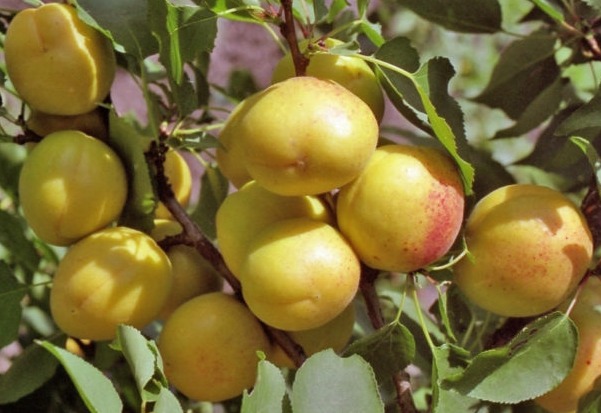
An early ripe, winter-hardy universal variety. The tree is medium-sized, fast-growing, with a paniculate raised crown of medium density. Begins fruiting in the third year. Shoots are straight, dark red, glabrous. Leaves are wide, ovate, short-pointed, dark green, smooth, shiny, with a crenate edge.
Fruits are round, with an orange main and red integumentary color, with slight pubescence, with an average weight of 20 grams. The pulp is yellow, tender, juicy, melting, mealy, sweet-sour taste. Tasting score 4 points.
Average yield: 48 centners / ha.
Moderately resistant to clotterosporium disease; aphids were damaged up to 1%.
Apricot variety Iceberg is included in the State Register for the Central Region.
Apricot Academician, characteristic

Medium ripening, winter hardy, versatile. Over the years of observation, the variety showed high winter hardiness and withstood negative air temperatures from 38 ° to 40 °.
The trees are vigorous, form a rounded-elongated crown. Stamp of medium thickness. The bark on the trunk is bumpy, gray, on the branches of the first and second orders - pale gray. The leaves are large, ovoid, with a slight taper towards the apex, thin and smooth. Begins fruiting in the third year.
Bloom from 10 to 18 May.
Fruits are large, yellow when fully ripe, weighing 30 grams. The pulp is yellow, tender, fibrous, sweet and sour taste. Tasting score 4 points. The fruits contain: sugars 8.2%, acids 1.8%, vitamin C 11 mg /%.
Yield: up to 124 c / ha.
Advantages: when ripe, the fruits do not crumble, in rainy years they do not crack. Large fruits of universal application, good presentation, resistant to fruit rot. This is the largest-fruited of all our varieties so far.
Apricot variety Akademik is included in the State Register for the Far East region.
Apricot Alyosha, photo
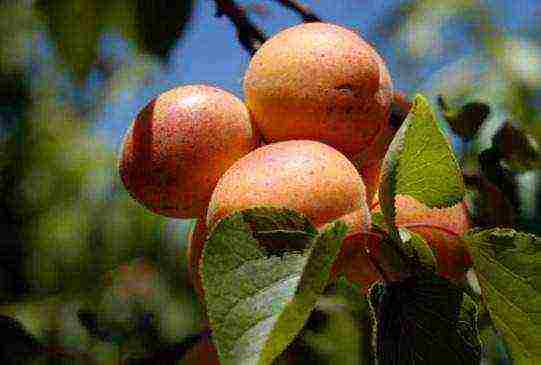
Early ripening, winter-hardy universal variety. The tree is medium-sized, fast-growing, with a paniculate raised crown of medium density. Begins fruiting in the 3rd year. Shoots are straight, dark red, glabrous. Leaves are wide, rounded or ovoid, short-pointed or long-pointed, dark green, smooth, shiny, with a crenate edge.
Fruits are round, with a yellow main and red integumentary color, with slight pubescence, with an average weight of 13 grams. The pulp is yellow, gristly, sweet and sour taste. The fruits contain: dry matter 13.2%, acid 1.8%, sugar 8.1%. Tasting score 3 points.
Average yieldb 43 c / ha.
The resistance to clotterosporium is average; aphids were damaged up to 1%.
Apricot variety Alyosha is included in the State Register for the Central Region.
Apricot Cupid, description
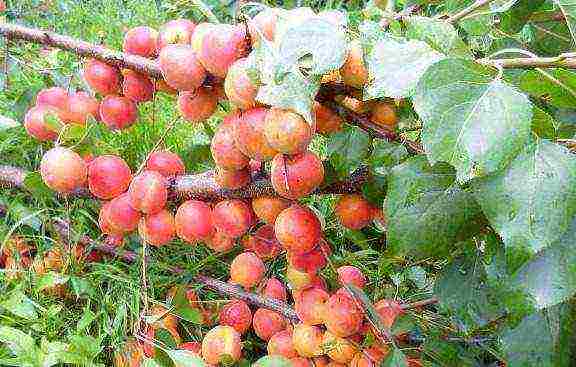
Medium ripening, table. Frost resistance is high. The yield is high. The crown is round, dense. The trunks are resistant to podoprevaniya and burns, but at a young age they are damaged by moniliosis, albeit to a weak extent. The burn resistance is satisfactory. The variety shows the best winter hardiness in elevated locations with well-drained soils, provided the roots are kept from getting wet.
The variety has a relatively high drought resistance. In the first half of summer, it satisfactorily tolerates the lack of moisture in the soil, completely preserves the leaves, fruit ovaries and gives a good annual growth. No death of leaves and branches due to drought was observed. The negative effect of excessive soil moisture on the death of roots was noted.
Trees are resistant to clasterosporium disease, fruits, like all varieties, are damaged by moniliosis in rainy weather. The flowers are relatively resistant to this disease.
The Cupid tree is slow-growing, compact, with a dense, round-elongated crown. The width of the crown at the age of 12 is 3-3.5 meters. The variety has a strong leafiness.
Trees enter the fruiting season in the third or fourth year of the scion's life, depending on the quality of the seedlings.
Fruit characteristics
Fruits are small, round, slightly elongated, weighing 32 grams. The side seam is shallow. The skin is yellow with a bright carmine blush. The funnel is shallow and wide. The top of the fruit is pointed. The skin is thin, velvety pubescent. The peduncle is very short, 3-5 mm long, thick. The pulp is orange, dense, tender, of medium juiciness. The taste is good, sweet and sour. The bone is separated. The seed is sweet.
Apricot variety Amur was included in the state register for the Far East region in 1979.
Distinctive features of this variety: round, compact crown, moderate growth. Strong foliage persists until leaves fall. Beautiful fruits with a blush, visible through the leaves, do not fall off when ripe. Red-burgundy buds and slightly pinkish flowers. The variety has well-defined characteristics.
Apricot Kichiginsky, variety description

Mid-season variety for universal use. The tree is medium-sized, with a flat crown of medium density. Begins fruiting in the 5th year. Shoots of medium thickness, straight, dark red. The leaves are medium, rounded, dark green.
Fruits are round, yellow, with an average weight of 14 grams. The pulp is yellow, juicy, sweet and sour taste. Tasting score 4.5 points. The fruits contain: sugar 6.3%, acid 2.3%, vitamin C 7.6 mg /%.
The variety is self-fertile, winter hardiness is high.
Apricot variety Kichiginsky is included in the State Register for the Ural Region.
Apricot Red-cheeked, photo
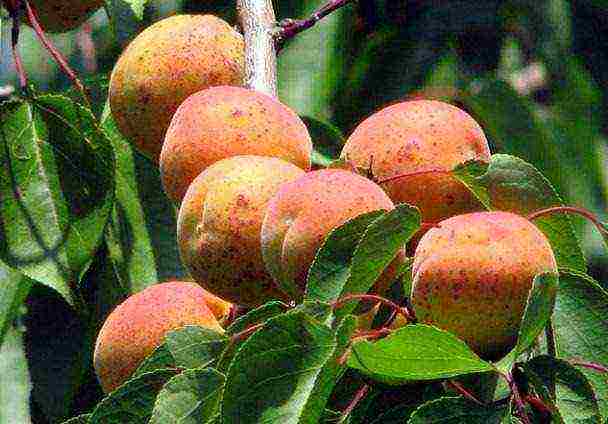
This apricot variety has been included in the State Register since 1947, therefore it has long been known among gardeners. It was originally grown in the North Caucasus and southern part of Russia, and although not included in the register for the Moscow region, in recent years it has been successfully grown in central Russia, the Moscow region.
Medium ripening, versatile, self-fertile variety. Winter hardiness is below average. Diseases are affected in an average degree. The yield is high.
The tree is vigorous. The crown is round, spreading, rare.
Fruits are large, weighing 50 grams, round or rounded-flat-ovate, very weakly compressed from the sides. The ventral suture is narrow, deep at the base. The skin is golden-orange with a reddish dotted blush, velvety pubescent, thin, dense. The pulp is light orange, dense, tender, aromatic, medium juiciness. The taste is sweet and sour, very good. The stone is large, separated. The seeds are sweet.
Apricot Lel, description
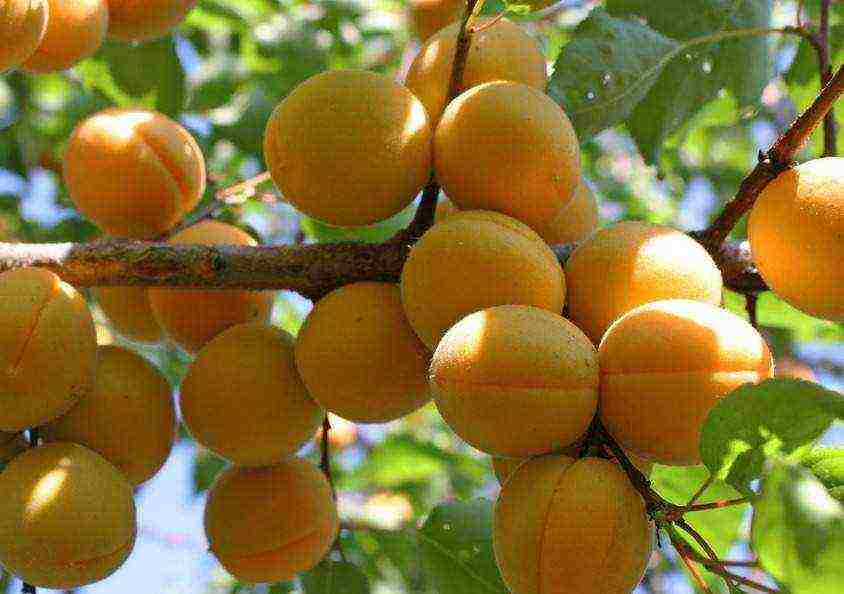
The winter-hardy variety Lel grows well and bears fruit in the climatic conditions of the Moscow region and the Moscow region.In these regions, there are almost no sudden changes in spring night temperatures, at which apricot flowers can freeze, and winter temperatures are stable here, in contrast to frequent temperature fluctuations in the southern regions. This reduces the risk of preheating the tree trunk during the thaw, therefore the Lel variety is considered one of the best for cultivation in these regions of the country.
The tree is medium-sized, reaching 3 meters in height. The dense light brown wood takes on darker shades in the center of the trunk. The tree is of moderate growth. Annual shoots of red-brown color darken with age. Weakly branched shoots form a neat compact crown in 3-4 years.
Dark green shiny ovoid leaves, smooth and soft to the touch. The short-pointed leaf blade is bordered with small denticles. The back of the sheet is matte. On the branches and annual shoots, the leaves are arranged alternately.
Single white-pink flowers sit tightly in the axils of the leaves. They have 5 rounded petals of regular shape and reach 3 cm in diameter. The flowers can withstand a drop in nighttime temperatures down to -1-1.5 ºС. The early flowering period (late April - early May) allows the tree to be an excellent honey plant.
Fruits are round, with an orange main and red integumentary color, with slight pubescence, with an average weight of 18 grams. The pulp is orange, tender, juicy, melting, sweet and sour taste. The fruits contain: dry matter 16.0%, acid 2.7%, sugar 9.0%. Tasting score 5 points.
Productivity of apricot Lel: up to 40 c / ha.
The resistance to clotterosporium is average; aphids were damaged up to 1%.
Apricot variety Lel was included in the State Register for the Central Region in 2004.
Apricot Favorite
Medium ripening, dessert variety. The tree is medium-sized, fast-growing, with a paniculate crown of medium density. Begins fruiting in the 3-4th year. Shoots of medium thickness, straight, dark red, glabrous. The leaves are large, ovate, long-pointed, dark green, dull, with a crenate smooth edge.
Fruits are cordate, yellow with red dots, with medium tomentose pubescence, with an average weight of 21 grams. The pulp is yellow, tender, mealy, sweet and sour taste. The fruits contain: dry matter 11.6%, sugar 6.1%, acid 2.1%, vitamin C 132.0 mg%. Tasting score 4.8 points.
Average yield: 18.8 c / ha.
Resistance to frost, pests and diseases is high.
Apricot variety Favorite was included in the State Register for the East Siberian region in 2008.
Apricot Monastic, description
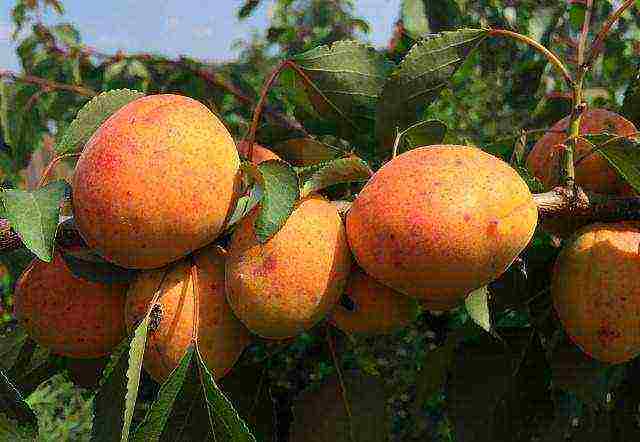
Monastyrskiy apricot variety is unpretentious in care, withstands frosts and gives abundant annual harvests.
Monastyrsky apricot obtained by free pollination of 3-4 own generation seedlings in the Main Botanical Garden named after N.V. Tsitsin RAS in 1996. The author of the variety is L.A. Kramarenko. It has a wide zoning zone, entered in the State Register for the Central Region in 2004. Excellent characteristics and fast acclimatization make it possible to grow this variety in the cities of the Moscow region.
Late ripening, winter-hardy, versatile variety. The tree is medium-sized, fast-growing, with a spherical spreading crown of medium density. Begins fruiting in the 3rd year. Shoots are straight, brownish-yellowish, glabrous. The leaves are large, wide, ovate, long-pointed, dark green, smooth, shiny, with a crenate edge.
Fruits are round, with a yellow main and pink integumentary color, with slight pubescence, with an average weight of 22 grams. The pulp is yellow, juicy, mealy, sweet-sour taste. The fruits contain: dry matter 13.2%, acid 2.1%, sugar 8.0%. Tasting score 4 points.
Productivity of apricot variety Monastyrskiy: up to 150 kg / ha.
The resistance to clotterosporium is average; aphids were damaged up to 1%.
Apricot Orlovchanin, characteristic of the variety
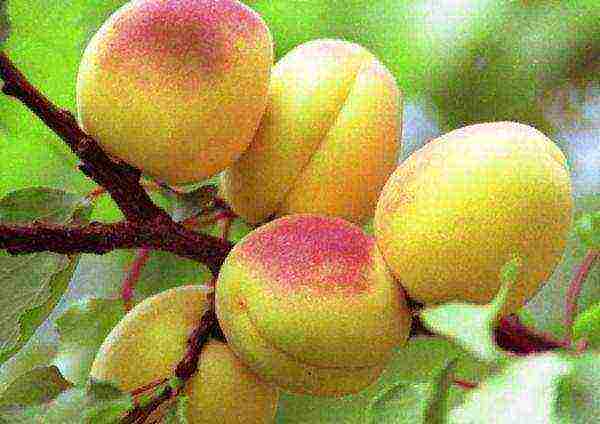
Mid-season, versatile variety. The tree is medium-sized with a spreading, raised crown of medium density.Begins fruiting in the 3rd year. Shoots are brown, naked. The leaves are large, wide, ovate, long-pointed, smooth, dull, with a double-toothed edge.
Fruits are flat-rounded-ovate with a yellow base and integumentary color, with slight pubescence, with an average weight of 33 grams. The pulp is yellow, mealy, sweet and sour taste. The fruits contain: dry matter 11.8%, sugar 6.2%, acid 1.9%, vitamin C 8.7 mg%. Tasting score 4.2 points. The stone separates well from the pulp.
Average yield 147 centners / ha.
Advantages of the variety: high frost resistance, resistance to klyasterosporiosis. Partially self-fertile.
The Apricot variety Orlovchanin is included in the State Register for the Central Black Earth Region.
Apricot Advertising, variety description
A variety for dining purposes, medium late ripening. Selection of the Stavropol Experimental Station for Horticulture. Obtained from crossing of the selected form Zherdeli with the Krasnoshchekiy late variety. Zoned across the Stavropol Territory.
The tree is large, medium-sized, with a reverse pyramidal crown of medium density, good foliage. Skeletal branches are long, of medium thickness, with an angle of origin of about 50 °. Shoots of medium length, slightly geniculate, reddish-brown. The leaf is large, wide, rounded, dark green, smooth, matte with a slight gloss. The flower is medium in size, single, the petals of the corolla are white with a light pink tint. Fruits are placed on one-year growth and shortened shoots (spurs).
Fruit characteristics
Fruits are large, one-dimensional, with an average weight of 40-45 grams, rounded-oval, slightly compressed from the sides, with a basic light yellow color. On the sunny side of the fruit, a pink blush appears with pronounced reddish-violet (carmine) dots covering 1/2 to 1/4 of the fruit's surface. The skin is of medium thickness, slightly pubescent, dull, cannot be removed from the fruit. The pulp is light yellow, juicy, slightly fibrous, of medium density, sweet and sour taste with an apricot aroma. The juice is colorless. The stone is medium in size, round-oval, well separated from the pulp. The seed is bitter, with a characteristic taste of amygdalin. The fruits contain 15.9% dry matter, 11.2% sugars, 19.4% vitamin C. The stem is short, thick, firmly attached to the stone.
Fruits of a medium late ripening period (at the end of July), 3-6 days later than Krasnoshchekiy, are distinguished by good transportability and versatility of use.
It blooms in an average time of 5-6 days, is self-fertile, the best pollinating varieties: Red-cheeked, Stavropol youth. The variety is fast-growing. Trees grafted on an apricot enter the fruiting season 3-4 years after planting.
Yield apricot varieties Reklamny at the age of 5-6 years old on average 35-40 kg per tree, at the age of 17-18 years from 70 to 93 kg per tree.
Winter hardiness of trees and flower buds is relatively high. Drought-resistant. Demanding on soil, light, heat and moisture. Responsive to fertilization. Requires the implementation of measures to protect against diseases and pests. More durable and yielding when cultivated on elevated relief elements. Formation on the improved low-tier crown. Due to the intensive growth, a limiting pruning is necessary with the subsequent transfer of the conductor to the lateral branch.
Advantages of the variety: early entry into the season of fruiting, high winter hardiness of flower buds, resistance to clasterosporia and monial burn, late ripening of fruits, their attractive appearance and high taste and canning qualities.
To the disadvantages varieties tallness, shrinking of fruits when overloaded with crops, bitter seed, self-infertility should be attributed, for normal fruiting, planting of pollinating varieties is required.
Apricot Samara, description, photo
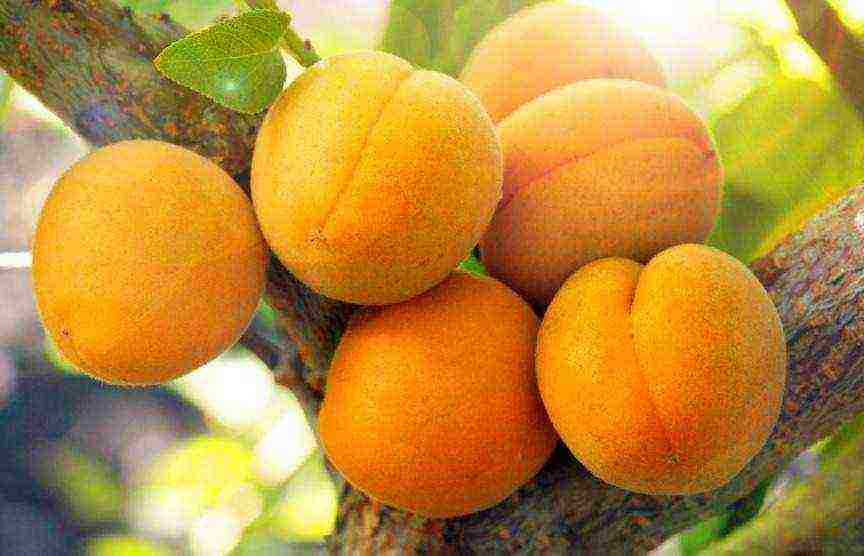
Late ripening, versatile, frost-resistant. The tree is medium-sized with a spreading, medium-dense crown. Begins fruiting in the 4th year.Shoots of medium thickness, straight, red-brown, glabrous. Leaves are ovate, long-pointed, dark green, smooth, with a finely serrated edge.
Flowering of this variety: May 1-3.
Fruits are one-dimensional, ovate, yellow, with slight pubescence, with an average weight of 17.6 g. The pulp is yellow-orange, juicy, dense, sweet and sour taste. The stone separates well from the pulp. Tasting score 4.4 points. The fruits contain: dry matter 13.1%, sugar 8.4%, acid 2.4%, vitamin C 13.8 mg%. The dates for harvesting fruits are August 7-12. The commercial and consumer qualities of the fruits are high. Fruits taken unripe are stored for up to 7-10 days. The transportability of apricots is high.
Yield at the age of 8 years is 15-20 kg per tree, at the age of 12-13 years - 40-50 kg. Fruiting is annual. Fruits firmly adhere to the tree, do not crumble when overripe.
Bred by A.N. Minin at the Samara zonal experimental gardening station as a result of crossing the varieties Kuibyshev Jubilee with Kuibyshev early. Introduced into the State Register for the Middle Volga region in 2005.
Propagated by grafting on seedling stocks of winter-hardy varieties: Skorospelki red, Ternoslivy Kuibyshevskaya, Vengerka Oktyabrskaya and clonal stock OPA-15-2.
Trees grow well in elevated areas of the western, southwestern, northwestern slopes, on soils of light and medium texture.
Formative pruning is necessary at a young age. During the period of full fruiting, the ends of the growths should be trimmed by one third; at an old age, rejuvenating pruning should be carried out.
Advantages of the variety: high winter hardiness of wood and flower buds, high annual yield, high quality fruits.
Disadvantages of the Samarsky variety: insufficiently large fruits.
Apricot Saratov ruby, description, photo

The hybrid demonstrates the best yield, of course, in its native Saratov region. Reviews from other regions are not always unambiguous, so we can say that it is still being tested.
A variety of medium ripening, universal use. The tree is medium-sized, fast-growing, with a spherical, spreading crown of medium density. Preferential placement of fruit formations on annual shoots, fruit twigs and spurs. The bark is flaky, brown. Shoots are medium, straight, brownish-brown, glabrous. There are few lentils, they are small, yellow-gray. Leaves are medium, wide-rounded, long-pointed, dark green, smooth, shiny. The leaf blade is concave, curved downward, sharply pointed, the base of the leaf is dull, there is no pubescence. The edge of the leaf is crenate. The petiole is medium. 2-3 pieces of iron, they are yellow, oval. Flowers in the inflorescence are medium, white, solitary.
Fruits are medium in size, elliptical in shape, with an average weight of 42 grams. The main color of the fruit is light orange, the integumentary color is carmine, blurred over most of the fruit. The skin is medium-rough, with velvety pubescence, it is difficult to remove from the fruit. Orange pulp, medium juiciness. The juice is colorless. The taste is sweet and sour. Tasting score 4.3 points. The content of dry matter in fruits is 14.2%, sugar 8.5%, acid 1.5%, pectin substances 1.33%, vitamin C 12.3 mg%. The stone is small, elliptical, slightly pointed, smooth, well separated from the pulp.
Average yield 338 centners / ha.
The variety is resistant to moniliosis and clasterosporiosis.
The apricot variety Saratov Ruby is included in the State Register for the Lower Volga Region and is recommended for testing in the North Caucasus region in 2015.
Apricot Sibiryak Baikalova, variety description
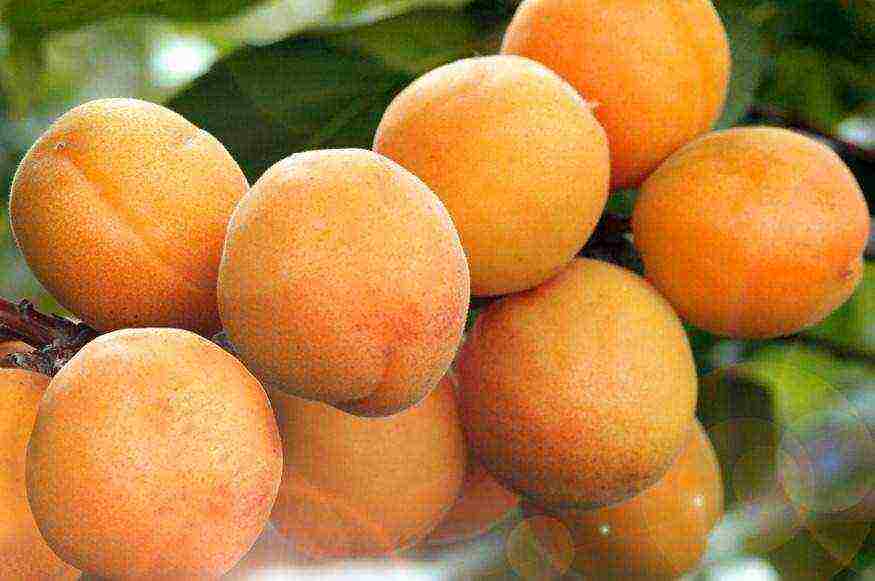
A versatile, frost-resistant variety, early ripening. The tree is medium-sized with a spherical spreading crown of medium density. Begins fruiting in the 3rd year. Shoots are thick, straight, red. Leaves are ovoid, dark green, dull, with a coarsely serrated edge.
Fruits are oval, orange, with a slight blush and medium pubescence, with an average weight of 27 g.The pulp is orange, fibrous, sweet taste. Tasting score 4.8 points. The fruits contain: dry matter 15.8%, sugar 7.1%, acid 2.4%, vitamin C 8.1 mg /%.
Average yield 75 kg / ha.
The Sibiryak Baikalova variety was included in the State Register for the East Siberian region in 2002.
Apricot Son of Krasnoshchekiy, description, reviews
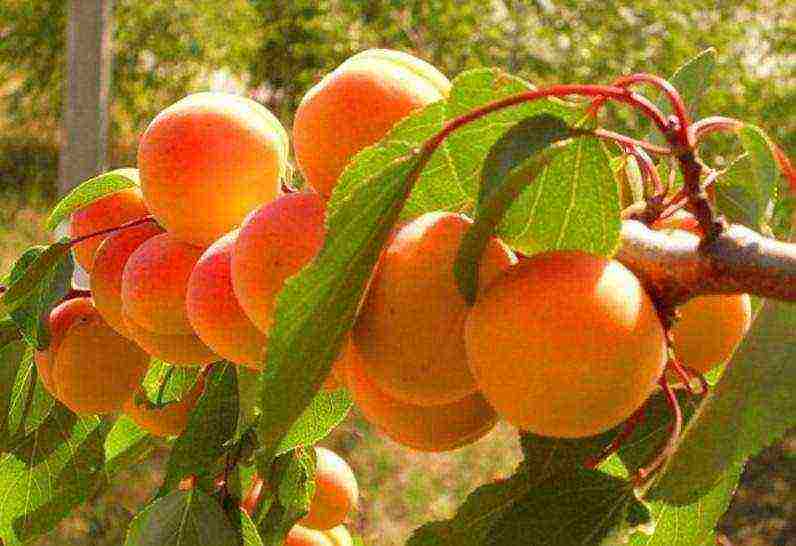
The variety was bred at the Rossosh zonal experimental gardening station by M.M. Ulyanishchev from crossing the varieties Golden Summer and Krasnoshekiy. Since 1974, the variety has been zoned in the Astrakhan region. Currently included in the State Register for the Lower Volga region.
The tree is medium to vigorous, with an oval or broadly oval raised dense crown with good foliage. The leaf blade is rounded, with a shortly pointed apex and often curled to one side and a heart-shaped base. The petiole is long, 20-40 mm long, of medium thickness, glabrous, with a bright burgundy anthocyanin coloration on top. The flowers are large, 25-30 mm in diameter, pure white, blossoming from pure white buds.
Fruit characteristics
Fruits with an average weight of 30-35 grams, height 40-45 mm, width 37-38 mm, thickness 34-35 mm, the largest fruits reach a weight of 55-60 grams, oval or round-oval, slightly or moderately flattened from the sides , rather regular, although often the abdominal half is slightly more massive than the dorsal half, the apex of the fruit is rounded, usually with a very small toe at the end of the abdominal suture, the suture is narrow, of medium depth. Orange peel, with a blurred orange-red blush on the sunny side, average pubescence. The stone is medium, weighing 2-3 grams, which is 6.5-8.5% of the fruit weight, oval, the apex is wide-rounded, the base is narrow-rounded, the dorsal suture is closed, the abdominal suture is narrow or of medium width, the central rib is well pronounced , acute, lateral ribs are also well expressed, much more blunt than the central one; the surface of the bone is bumpy, but smooth, the color of the fresh bone is brown; the bone lies in a large cavity, free, the core is bitter. The pulp is bright orange, rather dense, of a solid consistency, juicy, sweet with a light pleasant acid and barely perceptible bitterness, no powdery taste, with a pleasant apricot aroma, the tasting score is high - 4.7 points.
The fruits are used both for fresh consumption and processing. The compotes are of good quality with an overall rating of 4 points (4.1 points for appearance and 3.7 points for taste).
Flowering occurs in the middle or late period. Ripening in the middle period, in the south of the Central Black Earth Region at the end of the second - beginning of the third decade of July. Trees begin to bear fruit in 4-5 years, early maturity is good.
Advantages of the variety: large beautiful fruits of good taste, a sufficient level of adaptation of the tree to the conditions of the south of the Central Black Earth Region.
Disadvantages of the Son Krasnoshchekiy variety:irregular yield due to freezing of flower buds.
Apricot Favorite, variety description
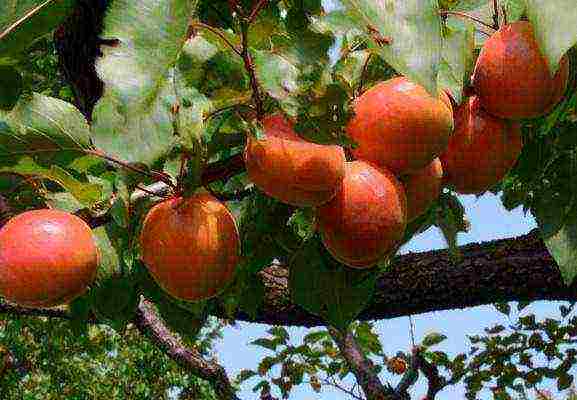
Late ripening, winter-hardy, versatile variety. The tree is medium-sized with a spreading, spreading, sparse crown, 3-4 meters high. Begins fruiting in the 3rd year. Shoots are straight, dark red, glabrous. The leaves are large, wide, ovate, long-pointed, dark green, smooth, shiny, with a crenate edge.
Fruits are round or ovoid, with a yellow and red integumentary color, with a large dense blush, with slight pubescence, with an average weight of 30 grams. The pulp is orange, juicy, gristly, melting, sweet-sour taste. Tasting score 4.5 points.
Yield: 30 c / ha.
The Favorit variety was included in the State Register in 2004 for the Central Region.
Disadvantage this variety, like the Monastyrsky, is the late ripening of the fruits. In years with cold rainy summers, the fruits do not have time to ripen and remain immature on the trees in September.
Apricot Khabarovsk, description
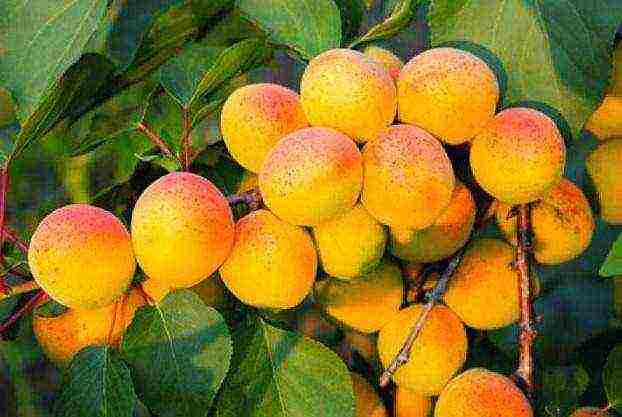
Early maturing, winter-hardy, disease-resistant, fruitful apricot variety. ripening period.
The tree is vigorous, reaching large sizes. At the age of 10, its height is 4.8 m, width is 5.1 m. The crown is rare, spreading. Leaves are of medium size, elongated-oval, with a sharp long end. The flowers are large, white. The shape of the petal is rounded.
Trees begin to bear fruit in the fourth, fifth year of the scion's life. The variety is capable of annual sustainable fruiting. Fruits ripen on July 28-30. The maximum yield per tree is 36.6 kg.
Characteristics of Khabarovsk apricot fruits
Fruits are large, average weight 30 grams, maximum 45 grams. The shape is rounded-conical, slightly compressed from the sides. The apex of the fruit is pointed, the lower fossa is deep. The seam is wide and deep. The surface of the fruit is bumpy, strongly pubescent, the skin is not peeling. The color is pale green, integumentary in the form of a solid, and in some places a dotted orange-red blush. The pulp is thick, medium juiciness, yellow-orange color, pleasant sweetish-sour taste. The fruits contain 12.3% sugars, 2.1% malic acid, 7.9% vitamin C, 16.1% dry matter. By taste, a variety for table purposes. The transportability of the fruits is average. Fruit tasting score 4 points. A stone weighing 1.2 g, round-elongated in shape, with grooves, well behind the pulp. The kernel is sweet.
The variety is resistant to drought and waterlogging. Relatively resistant to moniliosis and clasterosporiosis. It is damaged by the moth to a small extent.
Dignity varieties: large fruits for table use, good presentation, high annual yield. A pit with a sweet core. It is widely used for seed propagation.
Flaws: poor winter hardiness in low locations, insufficient fruit transportability.
Apricot variety Khabarovsk was included in the state register in 1979 for the Far East (Primorsky Territory) region.
Apricot Tsarsky, description, photo
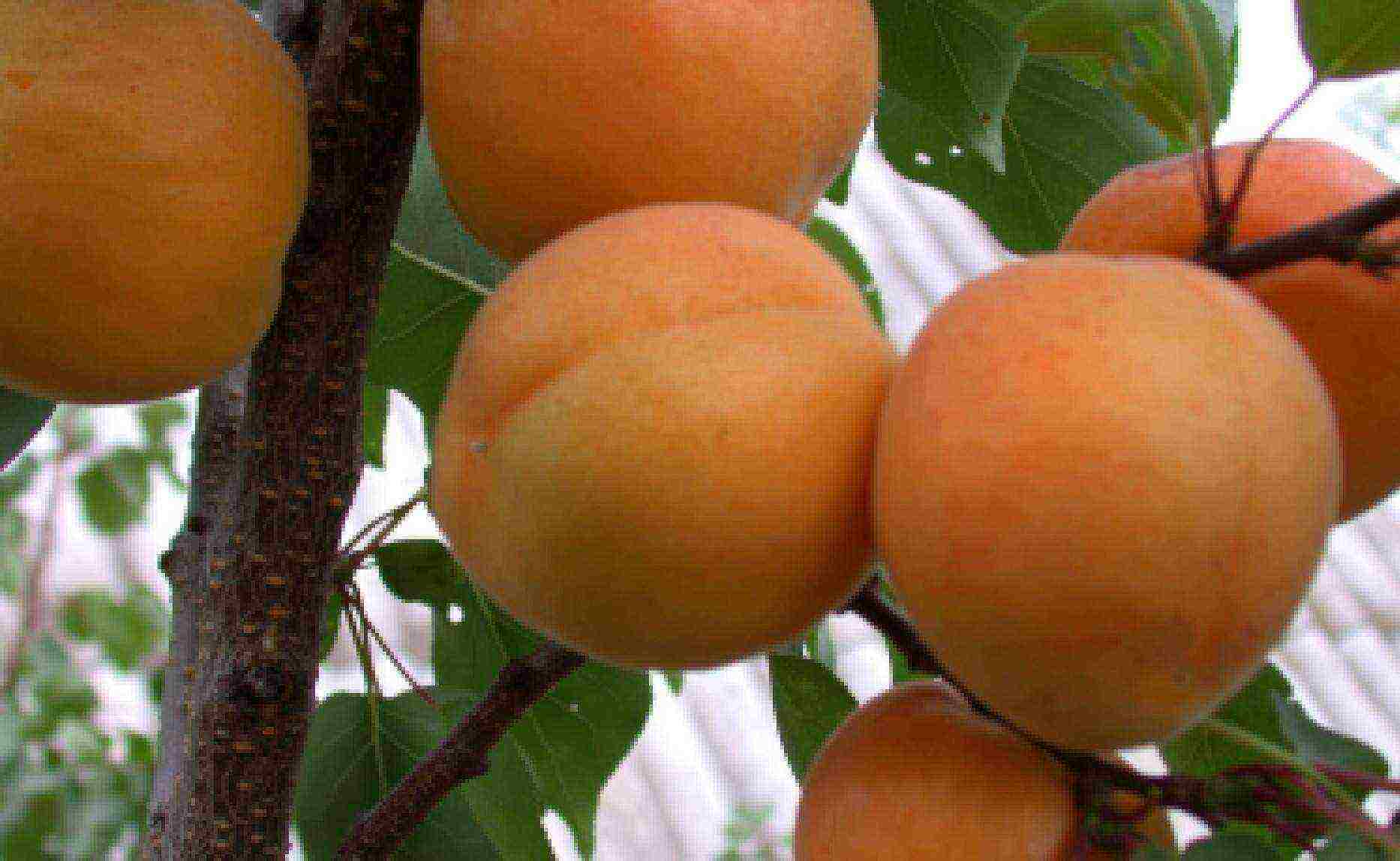
Early ripening, versatile, winter-hardy variety. The tree is medium-sized, slow-growing, with a paniculate raised crown of medium density. Begins fruiting in the 3rd year. Shoots are straight, dark red, glabrous. The leaves are wide, rounded or ovoid, short-pointed, dark green, smooth, shiny, with a crenate edge.
Fruits are round, with a yellow-orange main and red-pink integumentary color, with slight pubescence, with an average weight of 15 grams. The pulp is orange, tender, juicy, melting, sweet-sour taste. The fruits contain: dry matter 17.8%, acid 1.7%, sugar 8.5%. Tasting score 4 points. The fruits of the variety are suitable for fresh consumption, and high quality jams and compotes. The keeping quality of the variety is good.
Average yield 30 c / ha. The yield is average, but stable. The grafted plants enter fruiting 3-4 years after grafting.
The Tsarsky apricot variety was included in the State Register for the Central Region in 2004.
Apricot Black velvet, description, photo
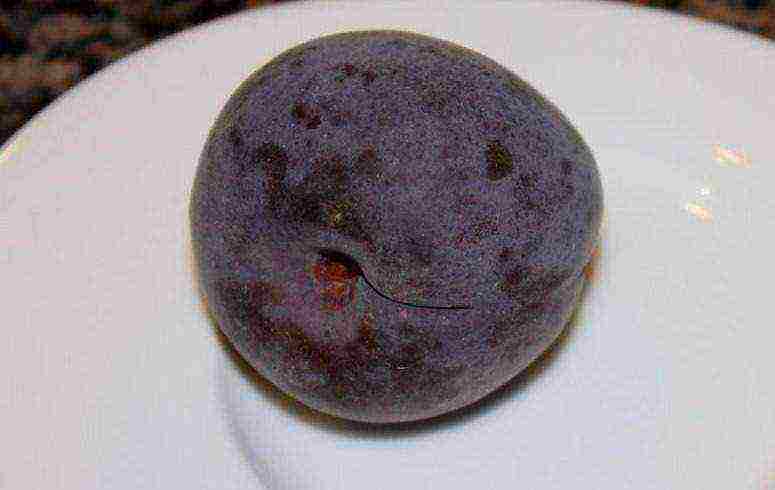
A variety of medium ripening, winter-hardy, universal. Wood average vigor. The crown is flat-rounded, of medium density.
Fruits are medium in size - 30 g, dark purple, pubescent. The pulp is yellow, pink at the skin, medium density, juicy, sweet-sour, aromatic, very good taste. The stone is medium in size, separating. The fruits ripen at the end of July, are transportable, suitable for fresh consumption and very good for canning.
The variety is partially self-fertile. Winter hardiness is high, at the level of winter-hardy cherry plum varieties. Drought resistance is average. Resistant to moniliosis, clasterosporium disease, bacteriosis, cytosporosis.
Advantages of the variety: high quality fruit, productivity, adaptability.
Flaws: insufficiently large fruits.
Apricot variety Black Velvet is included in the State Register for the North Caucasus region.
Apricot Triumph North, photo
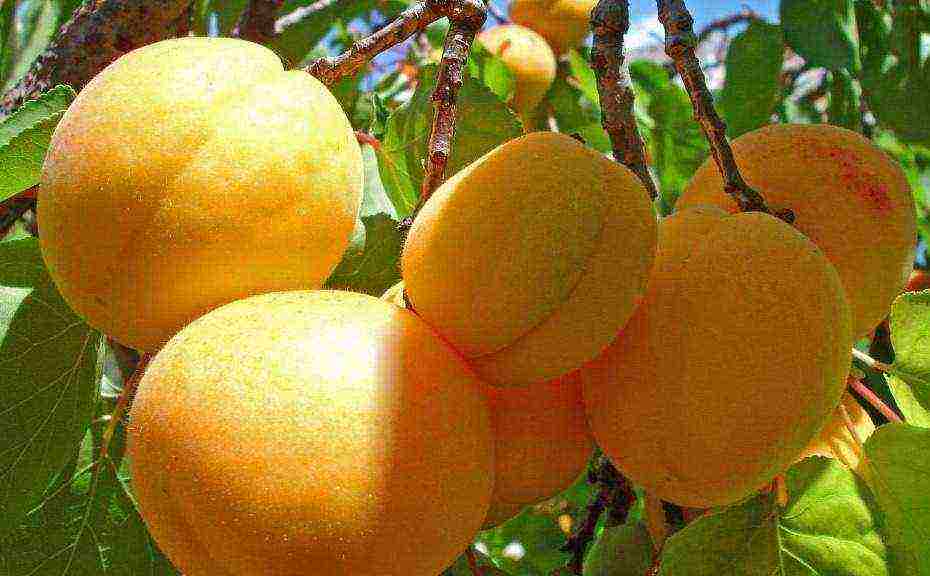
Obtained from crossing the famous ancient southern variety Krasnoschekiy and a seedling of the Trans-Baikal apricot Severny early. Author A.N. Venyaminov.It was zoned in the south of the Central Black Earth Zone.
The tree is vigorous, the crown is spreading. The branching is average. Skeletal branches are thick, branch off at an angle of 45 degrees or more. The leaves are large and pointed.
Round-oval apricots. The average fruit weight is 55 grams. The peel is pubescent, of medium thickness, sourish. The color at full maturity is yellow-orange with green on the shady side. Cover color in the form of a continuous blurred or deep red dense blush. The pulp is orange, juicy, tender, melting, pleasant sweet taste. The kernel is sweet. The variety is suitable for fresh consumption.
Apricots of this variety ripen in late July - early August. The first fruiting occurs in the 4th year of the tree's life in the garden. Harvesting intensively.
Apricot yield Triumph North: up to 64 kg of fruits from 1 tree.
Winter hardiness of wood is high, flower buds are medium. Disease resistant.
The apricot variety Triumph North is not included in the State Register of the Russian Federation.
If you grow any of these varieties of apricots, please write what characteristics are most important to you. What is the yield from 1 tree in your conditions?
Your feedback on the varieties of apricots will help many amateur gardeners to plant seedlings of the best varieties in their area.
Also, please indicate in which region you grow your wonderful trees. Thank you!
